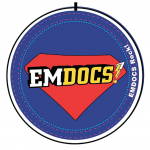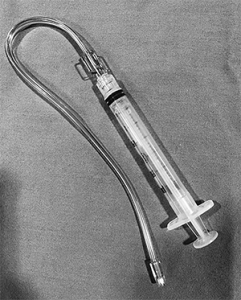 Our virtual doctors’ lounge, EM Docs, continues to grow! As of the writing of this column, there were 8,292 members—and we’re growing daily, with 365 requests awaiting verification as members add their colleagues and word gets around about our camaraderie!
Our virtual doctors’ lounge, EM Docs, continues to grow! As of the writing of this column, there were 8,292 members—and we’re growing daily, with 365 requests awaiting verification as members add their colleagues and word gets around about our camaraderie!
Explore This Issue
ACEP Now: Vol 35 – No 11 – November 2016There was a time when physicians met in a physical lounge, sat together, chatted about patients and interesting cases, and lifted one another with encouragement both professionally and personally. With the pressures in our current health care system, we find ourselves stretched so thin that we barely have time to spend with our families, much less with time to support one another. Physicians are smart, and we’ve found a way to decrease the stresses by joining together virtually!
Again, in this EM Docs column, I’d like to share some of our most helpful conversations. To maintain the privacy of the group, there won’t be personal attribution or details provided.
Non-Opiate Treatment of Headaches

Figure 1. Many EM Docs are using intranasal lidocaine delivered with a mucosal atomizing device for headaches to avoid opiate use.
As the saying goes, “everything old is new again.” Intranasal lidocaine delivered with a mucosal atomizing device (MAD) is regaining popularity as we search for ways to avoid opiate use in the emergency department (see Figure 1). EM Docs shared both old and new articles for an evidence-based approach to headache treatment.
“Evaluation of Efficacy of Intra-Nasal Lidocaine for Headache Relief in Patients Refer to Emergency Department” is a double-blind, randomized controlled trial studying 90 adult patients with acute headache.1 The dose was one puff of 10 percent lidocaine or normal saline per nostril. After intervention, the mean visual analog scale (VAS) scores were significantly lower in the lidocaine group than the placebo group at 1, 5, 15, and 30 minutes.
Since we lack 10 percent lidocaine in our departments, other (older) articles were referenced including “Intranasal Lidocaine for Treatment of Migraine: A Randomized, Double-Blind, Controlled Trial.”2 In this study, 81 patients with headache were given either a 4 percent solution of intranasal lidocaine or a saline placebo. Fifty-five percent of patients in the lidocaine group had at least a 50 percent reduction of headache compared with 21 percent in the placebo group.
Some EM Docs in the group who had tried this technique used 1 to 1.5 mL per nare with reported success for patients who had failed other treatments.
Recent neurology guidelines for first-step headache treatment are ketorolac 30 mg IV push or 30 to 60 mg intramuscular plus metoclopramide 10 mg IV push over two minutes plus diphenhydramine 25 to 50 mg IV push. Opiates for headaches are not recommended.
Pages: 1 2 3 | Single Page





No Responses to “Facebook Group, EM Docs, Support Emergency Physicians in Practice”